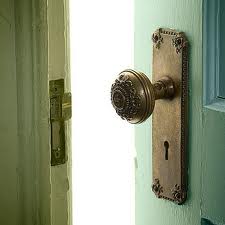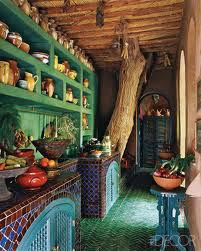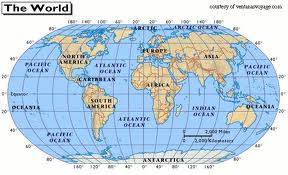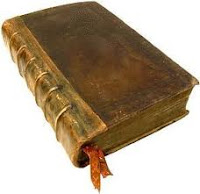The road is pitch black under a starlit sky, just the
headlights cutting a hole in the shadows, and the yellow dots of the lane
divider clip by. The silhouettes
of mountains and tall, thin pines stand out against a midnight blue sky. Out on Crippled Creek’s headway, off
Dead Fork Road, no one else exists.
Quietly, the miles pass.
The road bends and up ahead a blinking red light swings on a cable
stretched between 2 poles. It is a
crossroads and a town: Lost Falls.
Slowing down, a half dozen empty buildings slide by devoid of life: a
post office, a grocery store, a gas station, and in the distance a roadhouse,
the only open establishment for miles and miles. A neon sign shines brightly. In bold red letters, Nordo’s Hideout. It offers a place to rest
and find other people deep in the Northwest forest. A few cars in the gravel lot. A pickup. You swing in. And nothing tastes better, after a long stint on the road, than a fresh cup of coffee and breakfast.
Thursday, September 6, 2012
Sunday, April 8, 2012
Opening the Cabinet
We have been waiting for you. The Cabinet is ready for your tour.
Stepping aside he lets you through the door then closing it behind you he locks it.
Straight down the hall please.
You pass down a long wood paneled hall that ends in a steep staircase. Your guide speaks over your shoulder.
What happens in these halls is utterly unique, and it works
by it’s own reason. You may not
remember what happens here when you wake in the morning. Some say it is a side effect of the
wines we cultivate, but I believe it is the peculiar nature of the Cabinet. We
are not a part of the world beyond these walls. Our only concern is what occurs here.
You descend the staircase and
find yourself on a large landing.
In the center of the room stands a small table with 3 bottles of
champagne and fluted glasses. Some 16 or so people mill about the room drinking. They are animated and anxious. The
Guide pours you a glass then turns his attention to the group as a whole.
Welcome to the Cabinet of Curiosities, a compendium of all
things culinary, a pantry of wonders, as we like to call it, that stretches
across time and space. Tonight you will experience a select
portion of our Exhibits open to the public for a brief span of time. Through this series of dioramas we
explore our complex relationships with food.
As you entered the Cabinet you no doubt noticed a subtle
shift in the air. Some describe it
as a ripple passing over the scalp.
This is the barrier between outside the Cabinet and inside the Cabinet.
Did you experience it?
Well, perhaps not you with that beautiful lady on your arm. And you, you look rather daft so you
may have missed it. And you, you
seem intent on dreaming rather than paying attention. And you, well you’re obviously drunk. Well, perhaps not one of you caught it,
but believe me, the change was there.
You have stepped over a threshold.
 We here include the Novelty and Rarity, the Foreign and the
Exotic, the Strange and the Bizarre, the Transcendent and the Sublime, and the
Surprising and the Unexpected.
Tonight we remember what it is to Wonder.
We here include the Novelty and Rarity, the Foreign and the
Exotic, the Strange and the Bizarre, the Transcendent and the Sublime, and the
Surprising and the Unexpected.
Tonight we remember what it is to Wonder.
So much for the introductions. Chef Nordo demands we say that
every time. I think it’s his
favorite part.
How is everyone this evening?
I hope the journey was comfortable. Every once in awhile the “inter-dimensional travel” doesn’t
sit well and, as you can imagine, it causes indigestion on the cosmic level.
Before we begin I am required to ask. Is everyone here from Seattle 2012? Everyone?
Thursday, March 8, 2012
Kitchen of Wonders, Pantry of Curiosities
You stand on the threshold of a small wooden door with your hand upon the knob. You give a push. You leave behind the museums of cold glass reflections and stanchioned ropes. There are no more monuments. The usual world of definitions is behind you. Your mind is open to new answers, and you leave one world
behind for another. The door
opens.
Odors fill
and rouse the nose. A swarm of Mediterranean herbs hover over the browning of a
meat. The heavy smell
of baking coats the back of the throat. The flavorful aromas cause your taste buds to salivate and remember evenings in a restaurant with a glass of wine. Then the sense of hearing reacts. There is a sizzle like the strumming of a guitar over the rapid
drumbeat of roiling water as the thumping punctuations of a knife on a cutting
board dance with a whirring blender.
Next, the sense of touch awakens as the cheeks feel warmth from the
oven and moisture from the stovetop.
Finally sight catches up to the others.
The door
opens onto a kitchen. It is the
place most of us prefer to be. Most other rooms are for leisure or distraction, but the kitchen is the center of activity in the house with a
sense of purpose and fulfillment. In the kitchen we discover.
We laugh in the kitchen and feel safe. We grow drunk in the kitchen. We talk loudly over the sound of the work. The meal is often a satisfying end, a
celebration, of what was accomplished in the kitchen.
What were we doing all
those centuries ago when as we huddled around the fire? Keeping warm, pushing back the darkness, and cooking. The fire light is still with us in tradition, in metaphor, in religion, in fond memories for those who have cooked over fire or watched a meal sizzle over an open flame. As we roamed the fields
and learned the ways of the animals about us we examined the world in order to eat it. When we boil a liquid to separate it into it’s parts only to reconstitute those elements in another chamber through condensation we are experimenting in the kitchen, learning science, and distilling.
In the kitchen the fruits, the grains, the meats, the tools of the world come together.
This kitchen just now entered from the Victorian Cabinet of Curiosities that was in turn
connected to the Museum that we first entered on a bright and sunny
fall day in order to escape the crisp cold morning and spend a few hours learning something of
interest, differs from other kitchens, in that this kitchen has been here for generations (thousands of years). It began as a campfire. At some point it acquired walls though
still separate from the home. It consisted of separate rooms for storage of dry goods and storage of meats. It
acquired an oven, then a sink, drainage, cold storages, a stove top, blenders,
and today it even might have a dehydrator. This kitchen has seen fish from the North Atlantic, peppers
from South America, champignons from a hillside in Alsace, roast duck, roast beef, roasted
potatoes, fermented cabbage from both
Korea and Poland. In short, the
kitchen travels the world, or better yet, we travel the world through the
Kitchen. We start with basic fire,
we learn the ways of harvesting, we sharpen our knives, we import and trade, we
sautee, we toss, we bake, and all in order to eat. Here, we cook and eat.
The Kitchen is a wonder to
behold. It is a place of
Wonders. The kitchen is a Cabinet
of Wonders in and of itself residing in every home, under your nose, as it is
said.
Before we continue on our
journey, through that other door on the far wall, the large wooden one with an
iron handle in the shape of a butcher’s knife, rest a bit, take a seat at the
cutting board, have a wedge of Camembert, a sip of Trollinger wine, a warm
slice of bread, a grape or two.
Relish the Kitchen.
Wednesday, February 15, 2012
Cabinets of Wonder, Curiosity, and the Fulcrum
“The most beautiful
experience we can have is the Mysterious.
Whoever does not know it can no longer wonder, no longer marvel, is as
good as dead, and his eyes are dimmed.”
- Albert Einstein
History bobs around in
the most chaotic and unpredictable fashion. No one quite knows where roads may lead or for that matter
where they have begun.
Sometime during the 15th Century history took a
wild swerving detour that lasted some 400 years and established the world of today. During that time a
confluence of technology, stable political entities, and an emerging middle
class eager to make money encouraged a few Europeans to brave the oceans in
search of opportunity. As the
European began to emerge from the stifling times of the Middle Ages in which
much of the globe seemed as remote as the stars, he found a world populated
with the incredulous. New fauna,
new flora, new rocks, new peoples, new religions, new stories of wealth and
power were found at every turn.
This ‘newly discovered’ world became the fashion of the rich and the
intellectual. Everything under the
sun found it’s way back onto European soil, and so began a resurgent fascination with the natural world.
(It stands to notes that these explorations also brought to Europe a wide range of new foods: the potato, the tomato, the chili pepper, maize from the new world and abundant spices for the far East, thus setting the stage for our modern culinary arts. That is another story.)
(It stands to notes that these explorations also brought to Europe a wide range of new foods: the potato, the tomato, the chili pepper, maize from the new world and abundant spices for the far East, thus setting the stage for our modern culinary arts. That is another story.)
During the 16th
and 17th Centuries collections of natural history became as common
as collections of art or religious artifacts and often these were
one and the same and often a shard of the Holy Cross would be kept beside a
stuffed Pelican. Exhibits boasted
phosphorescent feathers, shrunken heads, rhinoceros horns, fetal skeletons, a
chain made of monkey teeth, elephant ears (not the edible variety), a unicorn’s horn, two-tailed lizards, a two headed cat, feathers from the
crown of a South American queen, and on and on and on the list unfolds. Imagine it, and it was collected
somewhere. These collections
became known as Cabinets of Wonder or Cabinets of Curiosities or Art Cabinets or Wunderkammen. Take your pick.
Amassed for all sorts of
reasons: economic benefit, personal prestige, and intellectual stimulation,
they existed in the centers of the European power and money: Paris, Vienna, Oxford, Basel, etc. Essentially, any man worth his salt
would want a Cabinet that included the rarities of manmade ingenuity
alongside Nature’s bountiful wonders and God’s miracles. They were after all one and the same.
Held in the hands of the
aristocracy and merchants class, the Cabinets became the basis for today’s
great museums when in the 19th Century it became vogue to clean out
one’s mansions and turn these cluttered attics over to the public for cataloguing.
Those are the facts as we
know them. But, what, we must ask,
actually happened that changed the world into our Modern one? The
answer is ‘Wonder’. Discovery blew
open the doors of the mind, and the immense variety of the world literally
stunned the European sensibilities right out of the Middle Ages and into the
Renaissance. All the old
assumptions of intellectual thought were challenged. Religious and
political authority were simultaneously shaken by the new attitudes of the time. Take the Reformation. A wholesale reorganization of the European world was in progress.
These
Cabinets stand at that intersection in the history of the world. On the one side we have the world
classified through the eyes of religion and magic, a world of humors and
ethers, of anthropomorphic gods and one god in a kingdom of gold looking down. On the other side we
have a world that develops over eons according to a series of natural laws and a
systematic classification through observation called science. On this side of the intersection we’ve drawn hard
lines and labeled boxes, laid a grid over the world, and established nomenclature that we can all agree on as right and wrong, or
at least plant, mineral, and animal. On this side, we have classified the world.
But let's pause in our progress and walk back into one of these Cabinets. Imagine ourselves awash in
the whimsy of creation, awestruck at the complexity with no single understanding of it all. Each item in the Cabinet has multiple stories to tell. And these stories draw lines that branch out in every direction linking one part of the world to another in a new fashion. This web of connections between disparate worlds, a carving of the Crucifixion beside a model of the Tower of London beside a mounted sample of coral, instills the Cabinets with the otherworld and
keeps it timeless. Something raw and young inhabits the Cabinets of Curiosities.
We still live with these Cabinets. They hide in unexpected places right under our nose.
We still live with these Cabinets. They hide in unexpected places right under our nose.
Open
the door and enter our Cabinet.
Sunday, January 29, 2012
The Modern Museum
Around the world the
museum is a monument, an institution like the library and the postal system,
denoting a level of societal achievement.
It can lend a small town in Nebraska a place in a travel guide. It can elevate a nation into
history. A museum-goer may carry a
small ball of pride and harbor a pinch of superiority at the time well spent.
The museum is a collection
of objects of scientific, artistic, cultural, or historical interest arranged
and displayed in accordance with a logical method and made available for public
viewing through exhibits. The word ‘museum’ is of Greek origin, and meant a
space dedicated to the muses - "a place where man's mind
could attain a mood of aloofness above everyday affairs." (Abridged definition taken from both Wikipedia and Dr. Wilson's Cabinet of Wonders) To that end it was a place to mediate
upon the world and practice the arts.
The first museum may have been an Athenian institute created by Plato or
merely a hill in Athens upon which an old man sat and sang until there he died, was
buried, and thus created a sanctuary. And in that dual origin
story we find both the beauty and the problem with the museum. What is a museum meant to do?
Consider the museums of
your lifetime. Though they may
preserve beautiful paintings or historic carvings or awe inspiring fossils the
museum can be a drool, potentially depressing archive of the past ensconced in
a pristine and grand manner. Like
a mortuary of human and natural spectacles, some sort of continual funeral
without a burial in sight, the museum preserves the past in an antiseptic manner. Perhaps inevitably so. Perhaps there is no other way.
Walking the halls we hover
somewhere out of time, induced to drowsiness by the atmosphere, as if a magical
spell poured in through the vents, a potion that frays the fabric of time until
we stumble about in a waking dream state.
Like Rip Van Winkle we doze off and awake to find years have passed
except in the case of the museum the years roll backward upon the rails not
forward.
In this state we are not taken away on flights of fancy, but instead we are led down a road of rigorous delineation of the world as if everything has its proper place. Here the
world is separated and catalogued.
The museum portrays a world of progress from age to age and culture to culture that ticks along like clockwork.
All the chaos and uncertainty and ambiguity of the world becomes domesticated in these halls. It’s
as if we wish to enclose Nature and History in a series of labelled Ziplock bags, as if we believe a stately
institutionalized palace could hold them in all their wonder.
All this certainty lends
authenticity and authority. Who
can argue with the art masters, the scientific pioneers, and the world explorers when all in one
place? Who can question the answers of learned experts, recorded voice-overs, brochures, and
captions neatly printed on foam core and mounted with the utmost attention to tidiness?
Somehow this is the world
we are more at home in though it is something fabricated, only a model of the world as it is. We can lounge in the well ordered and catalogued room with sharp distinctions. We breath easily in the home that works along well governed laws with no alternate answers.
The question is: Is it Real?
Next up: The Cabinets of Curiosity, the original
manifestation of the museum. And
don’t worry this is going somewhere culinary and delicious.
Saturday, January 14, 2012
In the Search of Wonder
This year We are about to
embark upon a long tale. It has
many twists to it, and at times will appear confusing and even ridiculous, but
the terminus will warrant the journey. It must begin somewhere which is here for lack of a better
starting point.
“Whenever we encounter
some truly novel phenomenon, one that reinvents the margins of our world, an
old hankering is awakened. At such moments we are like explorers of an unknown
dimension: everything appears fresh to our eyes, each idea seems unprecedented,
virgin, strange. In the face of this newly made universe, we may be tempted to
exclaim, ‘It cannot be!,’ yet our protests soon lie buried under an avalanche
of wonder.”
- Dr. Wilson’s Museum of Jurassic Technology
There are things we do not
understand in the World. We
approach them with anxiety unaware of what will happen. We prepare ourselves for the Unknown
and that ‘avalanche of wonder’.
There are those who seek
this ‘Wonder’. In their adventures
they blaze a trail for others to follow.
This may result in an epic tale such as The World Travels of Marco Polo
or a universal theory of relativity as with Albert Einstein. Or as in the case of Auguste Escoffier
it may be an enduring approach to all things culinary: recipes, kitchen
organization, the creation of the chef profession. All of which have transformed our world today. Whatever our specialty may be, we adore
those who embark upon the ‘margins of our world’ and elicit that state when
‘everything appears fresh to our eyes’.
It may be said that Chef Nordo Lefesczki, despite his crank and quack,
is one such pioneer currently blazing his trail with the Carnal Food Movement.
There are those who record
the Wonder. When such Luminaries
exist there must be a way to record and share the achievements. It may be as simple as a university
physics book or a painting that now hangs in the Louvre, an index of World
Records or an urban myth that travels the globe on the lips. In the case of Chef Nordo it is a
Cabinet of Curiosities set to appear in Seattle in May of 2012. For a few short weeks a selection of
the Cabinet’s exhibits will be open to the public. This is an extremely rare opportunity, one that people wait
for, a once in a lifetime affair.
As we all know, food is a
precious and overlooked necessity to life. And it is Chef Nordo’s goal to rekindle the wonder of the
world of food in everyone through his crafts of cooking and storytelling. It could be said this Cabinet includes
every idea, fact, myth, and imaginative spark ever to be inspired by our food. Café Nordo is the stage for Chef
Nordo’s stories. The Cabinet of
Curiosities is the repository of all that knowledge.
Someone must keep this
knowledge alive. Here, it is
stored.
Down a rabbit hole. Swept away by a tornado. Tumbled into Slumberland.
Visited by the spirits of
Past, Present, and Future.
This is the only way to
describe what Nordo has in store for us in his next and most outlandish
endeavor yet. Stay tuned as we
explore this Cabinet of Curiosities in anticipation of its Grand Opening in
Seattle 2012.
Subscribe to:
Comments (Atom)






















